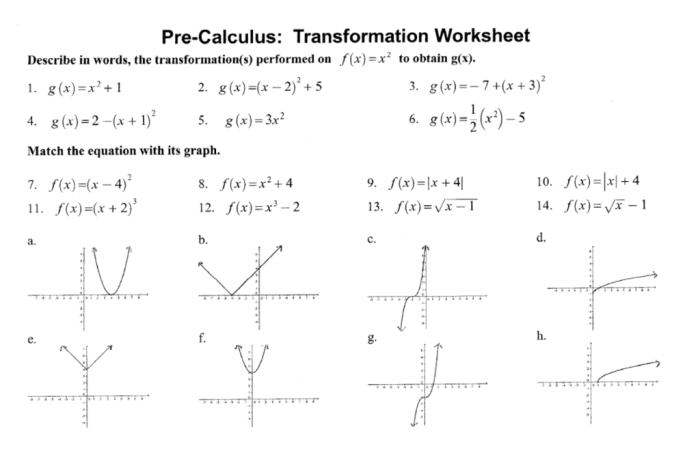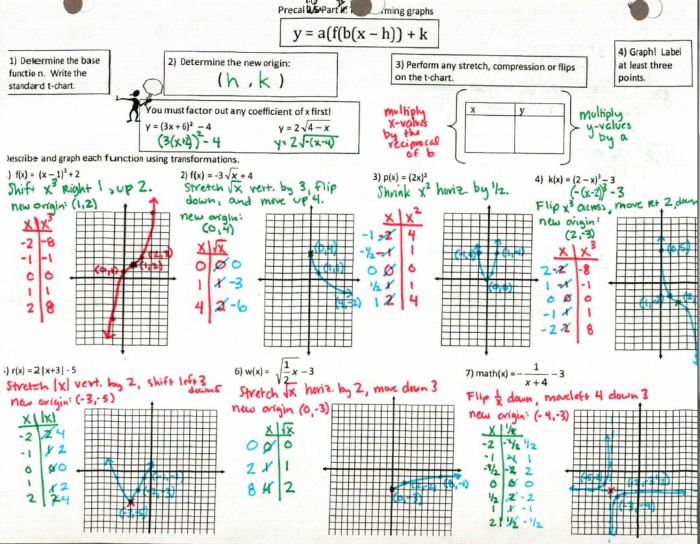Embarking on a journey through the realm of precalculus transformations of functions worksheet, we delve into the fundamental concepts that govern the manipulation of functions, exploring their diverse applications in real-world scenarios.
This comprehensive worksheet provides a structured framework for understanding the various types of transformations, their effects on function graphs, and their impact on function properties. Through guided practice problems and illustrative examples, learners will gain a deep comprehension of the principles underlying function transformations.
Precalculus Transformations of Functions: A Comprehensive Overview

Precalculus transformations of functions involve manipulating the graph of a function to obtain a new function with different properties. These transformations are essential for understanding the behavior of functions and their applications in real-world scenarios.
Common types of transformations include:
- Translations (shifting the graph vertically or horizontally)
- Reflections (flipping the graph over an axis)
- Rotations (rotating the graph around the origin)
- Stretching and shrinking (altering the amplitude or period of the graph)
Types of Function Transformations
Translations:
- Vertical translation: Shifts the graph up or down by a specific amount.
- Horizontal translation: Shifts the graph left or right by a specific amount.
Reflections:
- Reflection over the x-axis: Flips the graph upside down.
- Reflection over the y-axis: Flips the graph left to right.
Rotations:
- Rotation by 90 degrees: Rotates the graph counterclockwise by 90 degrees.
- Rotation by 180 degrees: Rotates the graph by 180 degrees.
Applying Transformations to Functions
To apply a transformation to a function, follow these steps:
- Identify the type of transformation and its parameters (e.g., shift amount, reflection axis).
- Apply the transformation to the function’s equation by adding or subtracting the appropriate values.
- Graph the transformed function.
Transformations and Function Properties, Precalculus transformations of functions worksheet
Transformations can affect the properties of a function, including:
- Domain: Shifts or flips the domain.
- Range: Shifts or flips the range.
- Symmetry: Preserves or reverses symmetry.
- Extrema: Alters the location and value of extrema.
Practice with Transformation Worksheets
Practice problems can reinforce your understanding of transformations. Worksheets may include:
- Identifying transformations from graphs.
- Applying transformations to functions.
- Analyzing the effects of transformations on function properties.
Real-World Applications of Transformations
Transformations are used in various fields to model and analyze data:
- Physics: Modeling motion, forces, and waves.
- Engineering: Designing bridges, buildings, and circuits.
- Finance: Predicting stock prices and analyzing economic trends.
Top FAQs: Precalculus Transformations Of Functions Worksheet
What are the different types of function transformations?
Function transformations include translations, reflections, rotations, and dilations.
How do transformations affect function graphs?
Transformations shift, flip, rotate, or stretch function graphs along the coordinate axes.
What are the applications of function transformations?
Function transformations are used in fields such as physics, engineering, and finance to model and analyze data.


